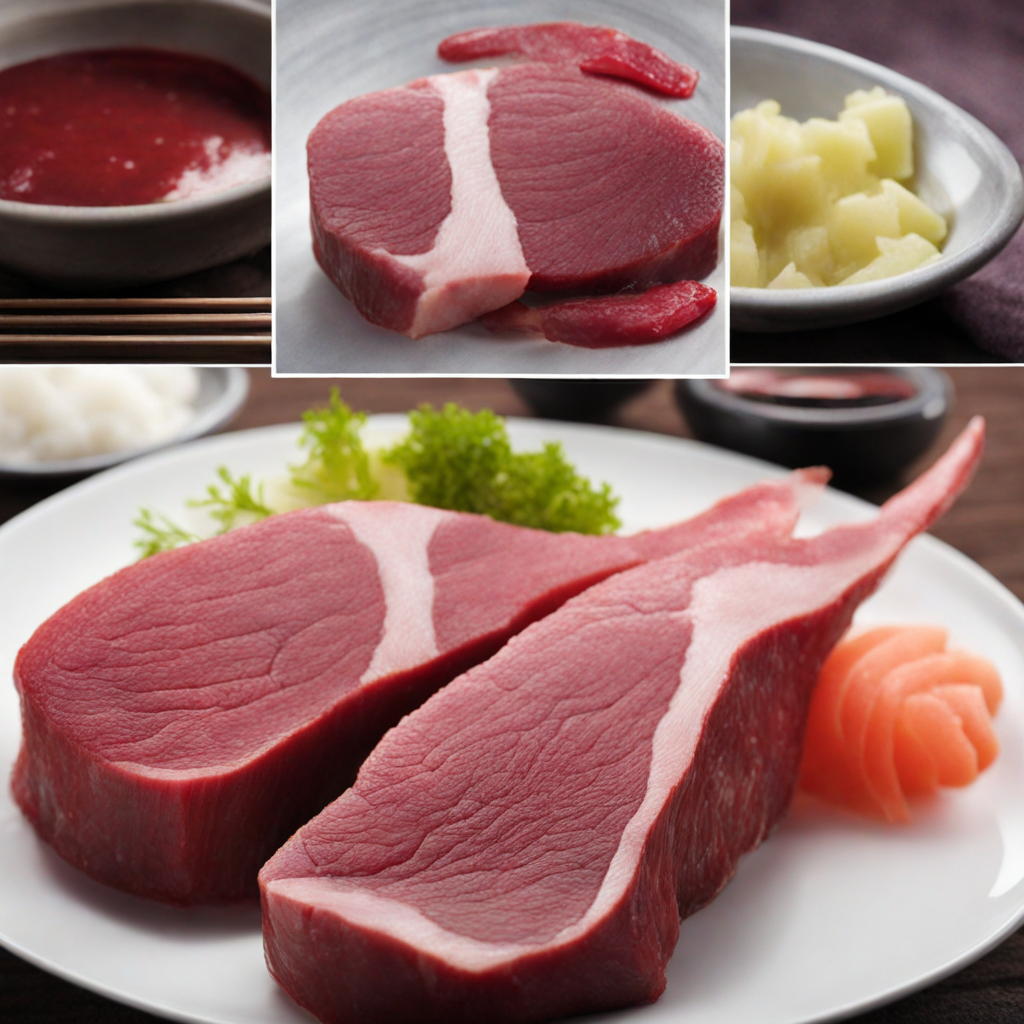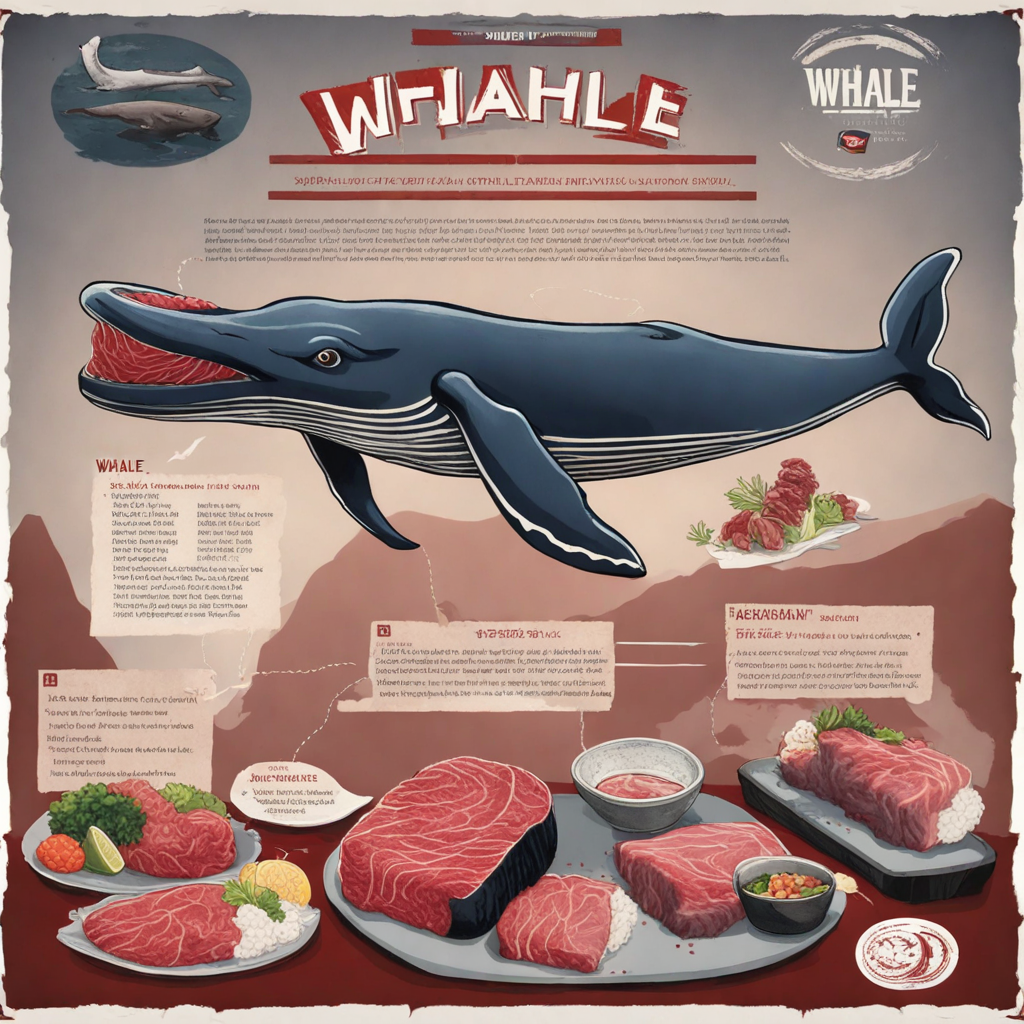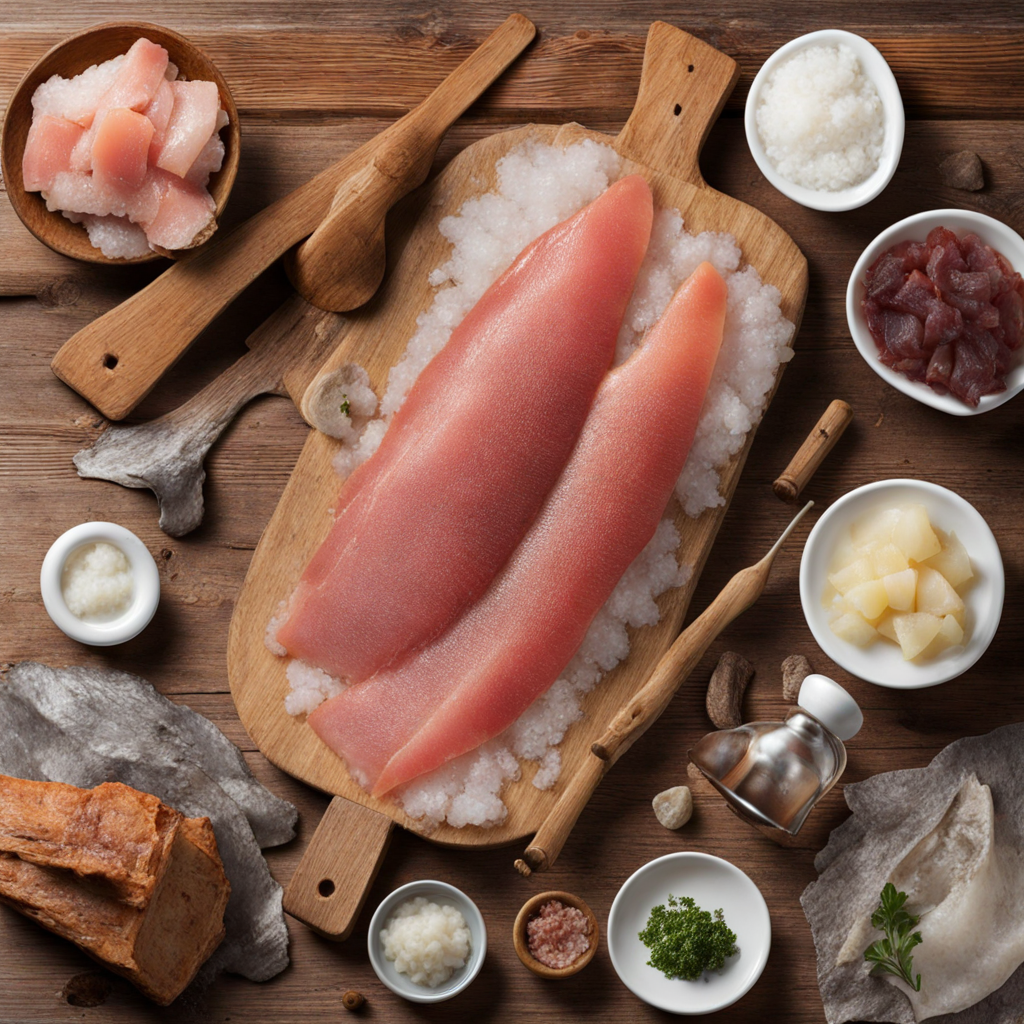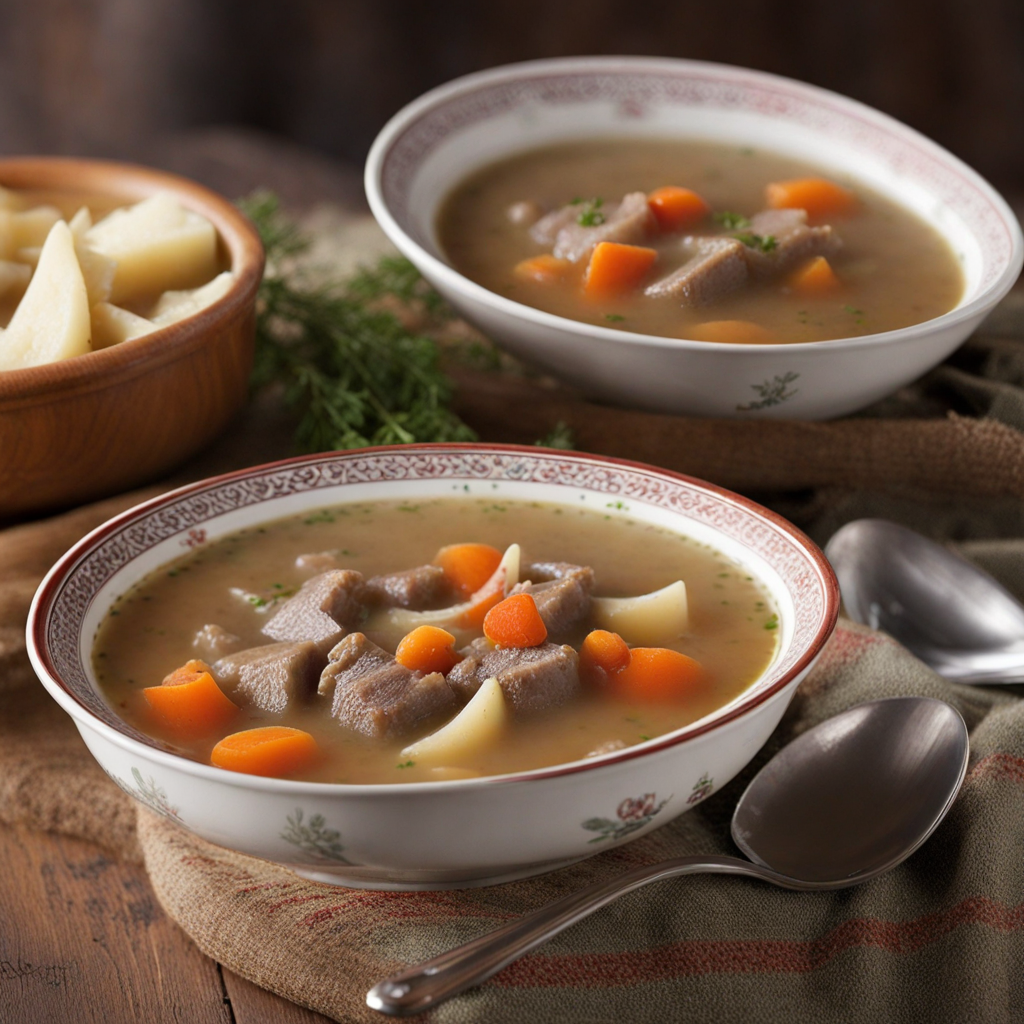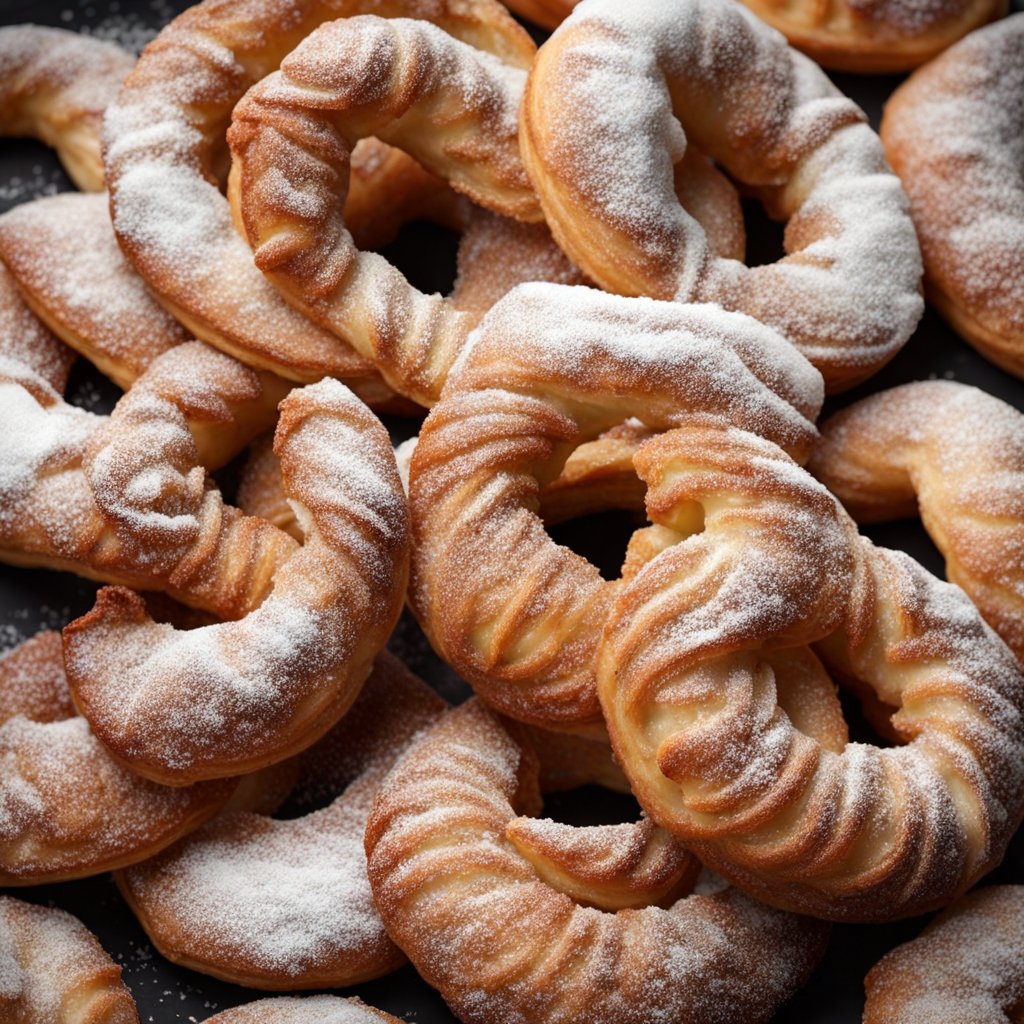Whale Meat
Whale meat, a traditional delicacy in Iceland, presents a unique and robust flavor profile that reflects its oceanic origins. This dark red meat, often compared to beef or game, is rich in taste and has a slightly sweet, umami quality. The texture varies from tender to firm, depending on the cut, with the most popular being the meat of the minke whale, which is known for its relatively mild flavor. Served in various forms, from steaks to sushi, whale meat offers a culinary experience that is both adventurous and deeply rooted in Icelandic heritage. In Icelandic cuisine, whale meat is often grilled or seared, allowing the natural flavors to shine through. It is commonly accompanied by traditional sides such as potatoes, vegetables, or even a tangy berry sauce, which complements the richness of the meat. Some dishes feature marinated or smoked whale, enhancing the depth of flavor and adding a smoky dimension that many find appealing. Diners may also encounter a variety of preparations, from hearty stews to raw sashimi-style bites, showcasing the versatility of this unique ingredient. Beyond its taste, whale meat carries a cultural significance for many Icelanders, symbolizing a connection to the sea and the country's whaling history. While it may be a controversial choice for some, those who indulge in whale meat often describe it as an unforgettable culinary adventure that offers a taste of Icelandic tradition. For food enthusiasts eager to explore flavors beyond the ordinary, whale meat presents an opportunity to engage with a distinctive aspect of Iceland's culinary landscape.
How It Became This Dish
Origins of Hvalur Hvalur, or whale meat, has deep roots in Icelandic culture, reflecting the harsh and challenging environment of the North Atlantic. The practice of whaling began in the Viking Age, around the 9th century, when early settlers arrived in Iceland. The vast ocean surrounding the island provided a rich source of marine life, and the whaling techniques developed by these settlers were initially focused on hunting smaller species of whales, such as the minke and the bowhead. As the population grew and the demand for food increased, whalers began to target larger species, leading to a more organized approach to hunting and processing whale meat. The method of harvesting whales was not only about sustenance; it was also an expression of the Icelandic people's relationship with nature. Whaling was seen as a necessary means of survival, and the animals were respected as vital contributors to the ecosystem. Traditional techniques were passed down through generations, with families often participating in hunting expeditions together. This practice forged a strong cultural bond, emphasizing communal knowledge and a shared history. \n\n Cultural Significance In Iceland, whale meat holds a unique cultural significance that transcends mere sustenance. It is often associated with the island's identity and heritage. For centuries, whale meat was a staple in the diet of Icelanders, especially during the long winters when other food sources were scarce. The meat was commonly preserved through various methods such as smoking, drying, or fermenting, each contributing to the distinct flavors associated with traditional Icelandic cuisine. Whale meat also features prominently in local festivals and celebrations. One of the most notable events is the annual Þorrablót, a midwinter festival that celebrates the Norse gods and ancient traditions. During this festival, Icelanders consume various traditional foods, including fermented whale blubber known as "hvalspik," showcasing the meat's role in Icelandic cultural practices. The consumption of whale meat serves as a reminder of the resilience and resourcefulness of the Icelandic people, who have adapted their culinary traditions to reflect the environment around them. \n\n Development Over Time The whaling industry in Iceland underwent significant changes throughout the 20th century. In the early years, whaling was conducted primarily for local consumption, but as demand for whale products grew internationally, commercial whaling became more prevalent. By the mid-20th century, Iceland had established itself as a key player in the global whaling industry, particularly targeting species like the fin whale and the humpback whale. This growth was fueled by advances in whaling technology, including the use of harpoon guns and motorized boats, which allowed for more efficient hunting. However, the rise of environmental awareness in the latter half of the 20th century led to increased scrutiny of whaling practices. International bans and regulations, spearheaded by organizations such as the International Whaling Commission (IWC), aimed to protect whale populations from over-exploitation. Iceland's whaling industry faced challenges as public opinion shifted, with many countries and organizations advocating for the protection of marine life. Despite this, Iceland continued to pursue limited whaling practices, arguing for the cultural and historical significance of whale meat in their society. \n\n Modern Perspectives In contemporary Iceland, the consumption of whale meat is a topic of heated debate. While some Icelanders continue to enjoy whale dishes, citing tradition and cultural heritage, many others oppose whaling on ethical grounds. The rise of eco-tourism and a growing awareness of environmental conservation have led to a decline in whale meat consumption, particularly among younger generations. Restaurants in Reykjavik, once known for serving whale steak, have reduced or eliminated these offerings in response to changing societal values and the influence of international tourists who often express their disapproval of whaling. Despite the controversies, whale meat remains a part of Iceland’s culinary landscape. Traditional recipes, such as whale steak marinated in soy sauce or served with a side of potatoes, still appear on menus, particularly in tourist areas where visitors seek to experience authentic Icelandic cuisine. This duality reflects the tension between preserving cultural traditions and responding to contemporary ethical considerations surrounding food sourcing. \n\n Conclusion As Iceland navigates the complexities of modernity and tradition, the story of Hvalur exemplifies the broader themes of cultural identity, sustainability, and ethical consumption. The rich history of whale meat, from its origins as a survival food to its status as a controversial culinary choice, encapsulates the challenges faced by societies in balancing heritage with modern values. Whether viewed as a vital component of Icelandic culture or as an outdated practice, Hvalur continues to provoke discussion and reflection on the evolving relationship between people and the natural world. In Iceland, the future of whale meat remains uncertain, yet it undeniably holds a place in the narrative of the island's history, symbolizing the enduring connection between the Icelandic people and the ocean that surrounds them.
You may like
Discover local flavors from Iceland


